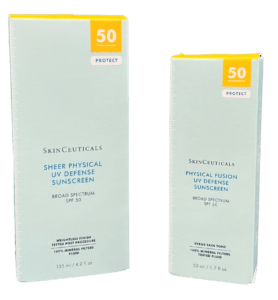As a plastic surgeon in Fort Worth, I see firsthand the damage the Texas sun can do to the skin. From premature aging to an increased risk of skin cancer, the harmful effects of ultraviolet (UV) radiation are well-documented. One of the most effective ways to protect your skin is by using sunscreen. But with so many options available, it can be overwhelming to choose the right one. This blog will demystify the essentials of sunscreen, including SPF, types of ultraviolet radiation, and the best ingredients to look for.
Understanding Ultraviolet Radiation
Ultraviolet radiation from the sun is a significant cause of skin damage. It is divided into three types: UVA, UVB, and UVC.
- UVA: These rays penetrate deeply into the skin, causing aging, wrinkles, and potentially skin cancer. They are present throughout the day and can penetrate through clouds and glass.
- UVB: These rays are responsible for sunburn and play a crucial role in the development of skin cancer. They are strongest between 10 a.m. and 4 p.m.
- UVC: These rays are absorbed by the earth’s atmosphere and do not reach the ground, so they are not a concern in terms of sun exposure.
What is SPF?
SPF stands for Sun Protection Factor. It measures the level of protection a sunscreen provides against UVB rays. The SPF number indicates how long it would take for your skin to burn compared to if you were not wearing any sunscreen. For example, if you use an SPF 30 sunscreen, it would take you 30 times longer to burn than if you were not wearing any sunscreen.
It’s important to note that no sunscreen can block 100% of UVB rays. Here’s a breakdown of what different SPF levels offer:
- SPF 15: Blocks about 93% of UVB rays.
- SPF 30: Blocks about 97% of UVB rays.
- SPF 50: Blocks about 98% of UVB rays.
The Importance of Broad-Spectrum Protection
When choosing a sunscreen, it’s important to select one that offers broad-spectrum protection. This means it protects against both UVA and UVB rays. UVB rays cause sunburn, while UVA rays penetrate deeper into the skin and contribute to premature aging and skin cancer. A broad-spectrum sunscreen will help protect your skin from the full spectrum of UV damage.
Best Ingredients to Look for in Sunscreen
The effectiveness of a sunscreen also depends on its ingredients. Here are some key ingredients to look for:
- Zinc Oxide: A mineral sunscreen ingredient that provides broad-spectrum protection. It is gentle on the skin and suitable for sensitive skin types.
- Titanium Dioxide: Another mineral sunscreen ingredient that offers broad-spectrum protection. It is often used in combination with zinc oxide.
- Avobenzone: A chemical sunscreen ingredient that absorbs UVA rays. It is often combined with other ingredients to provide broad-spectrum protection.
- Octocrylene: A chemical sunscreen ingredient that absorbs UVB rays and some UVA rays. It is often used to stabilize other sunscreen ingredients.
- Mexoryl SX: A chemical sunscreen ingredient that offers excellent protection against UVA rays and is photostable, meaning it does not break down in sunlight. Since Mexoryl does not cover the entire spectrum of UV radiation, it should be combined with other sunscreen agents to provide broad spectrum coverage.
Here are photographs of a few wonderful products that have zinc oxide and titanium dioxide that we offer in our office:
Tips for Using Sunscreen Effectively
To get the most out of your sunscreen, follow these tips:
- Apply Generously: Use enough sunscreen to cover all exposed skin. A good rule of thumb is to use about an ounce (a shot glass full) for your entire body.
- Reapply Often: Reapply sunscreen every two hours, or more often if you are swimming, sweating, or toweling off.
- Don’t Forget Easy-to-Miss Areas: Pay attention to areas like the ears, back of the neck, tops of the feet, and along the hairline.
- Use Sunscreen Year-Round: UV rays can damage your skin even on cloudy or cool days. Make sunscreen a part of your daily routine, regardless of the weather.
Conclusion
Sunscreen is a vital tool for protecting your skin from the harmful effects of UV radiation. By understanding the basics of SPF, broad-spectrum protection, and the best ingredients, you can make an informed choice that will help keep your skin healthy and youthful. Remember, the best sunscreen is the one you will use consistently, so find a product that works for you and make it a part of your daily routine. Stay safe in the sun!




